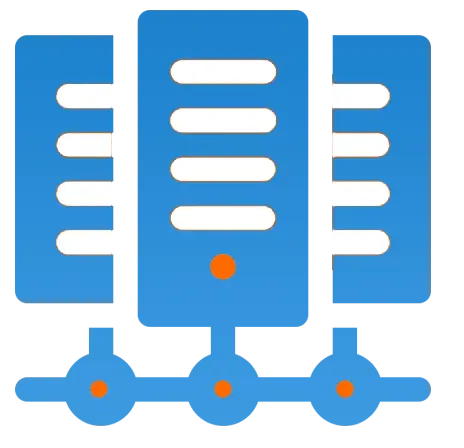Get 69% Off on Cloud Hosting : Claim Your Offer Now!
- Products
-
Compute
Compute
- Predefined TemplatesChoose from a library of predefined templates to deploy virtual machines!
- Custom TemplatesUse Cyfuture Cloud custom templates to create new VMs in a cloud computing environment
- Spot Machines/ Machines on Flex ModelAffordable compute instances suitable for batch jobs and fault-tolerant workloads.
- Shielded ComputingProtect enterprise workloads from threats like remote attacks, privilege escalation, and malicious insiders with Shielded Computing
- GPU CloudGet access to graphics processing units (GPUs) through a Cyfuture cloud infrastructure
- vAppsHost applications and services, or create a test or development environment with Cyfuture Cloud vApps, powered by VMware
- Serverless ComputingNo need to worry about provisioning or managing servers, switch to Serverless Computing with Cyfuture Cloud
- HPCHigh-Performance Computing
- BaremetalBare metal refers to a type of cloud computing service that provides access to dedicated physical servers, rather than virtualized servers.
-
Storage
Storage
- Standard StorageGet access to low-latency access to data and a high level of reliability with Cyfuture Cloud standard storage service
- Nearline StorageStore data at a lower cost without compromising on the level of availability with Nearline
- Coldline StorageStore infrequently used data at low cost with Cyfuture Cloud coldline storage
- Archival StorageStore data in a long-term, durable manner with Cyfuture Cloud archival storage service
-
Database
Database
- MS SQLStore and manage a wide range of applications with Cyfuture Cloud MS SQL
- MariaDBStore and manage data with the cloud with enhanced speed and reliability
- MongoDBNow, store and manage large amounts of data in the cloud with Cyfuture Cloud MongoDB
- Redis CacheStore and retrieve large amounts of data quickly with Cyfuture Cloud Redis Cache
-
Automation
Automation
-
Containers
Containers
- KubernetesNow deploy and manage your applications more efficiently and effectively with the Cyfuture Cloud Kubernetes service
- MicroservicesDesign a cloud application that is multilingual, easily scalable, easy to maintain and deploy, highly available, and minimizes failures using Cyfuture Cloud microservices
-
Operations
Operations
- Real-time Monitoring & Logging ServicesMonitor & track the performance of your applications with real-time monitoring & logging services offered by Cyfuture Cloud
- Infra-maintenance & OptimizationEnsure that your organization is functioning properly with Cyfuture Cloud
- Application Performance ServiceOptimize the performance of your applications over cloud with us
- Database Performance ServiceOptimize the performance of databases over the cloud with us
- Security Managed ServiceProtect your systems and data from security threats with us!
- Back-up As a ServiceStore and manage backups of data in the cloud with Cyfuture Cloud Backup as a Service
- Data Back-up & RestoreStore and manage backups of your data in the cloud with us
- Remote Back-upStore and manage backups in the cloud with remote backup service with Cyfuture Cloud
- Disaster RecoveryStore copies of your data and applications in the cloud and use them to recover in the event of a disaster with the disaster recovery service offered by us
-
Networking
Networking
- Load BalancerEnsure that applications deployed across cloud environments are available, secure, and responsive with an easy, modern approach to load balancing
- Virtual Data CenterNo need to build and maintain a physical data center. It’s time for the virtual data center
- Private LinkPrivate Link is a service offered by Cyfuture Cloud that enables businesses to securely connect their on-premises network to Cyfuture Cloud's network over a private network connection
- Private CircuitGain a high level of security and privacy with private circuits
- VPN GatewaySecurely connect your on-premises network to our network over the internet with VPN Gateway
- CDNGet high availability and performance by distributing the service spatially relative to end users with CDN
-
Media
-
Analytics
Analytics
-
Security
Security
-
Network Firewall
- DNATTranslate destination IP address when connecting from public IP address to a private IP address with DNAT
- SNATWith SNAT, allow traffic from a private network to go to the internet
- WAFProtect your applications from any malicious activity with Cyfuture Cloud WAF service
- DDoSSave your organization from DoSS attacks with Cyfuture Cloud
- IPS/ IDSMonitor and prevent your cloud-based network & infrastructure with IPS/ IDS service by Cyfuture Cloud
- Anti-Virus & Anti-MalwareProtect your cloud-based network & infrastructure with antivirus and antimalware services by Cyfuture Cloud
- Threat EmulationTest the effectiveness of cloud security system with Cyfuture Cloud threat emulation service
- SIEM & SOARMonitor and respond to security threats with SIEM & SOAR services offered by Cyfuture Cloud
- Multi-Factor AuthenticationNow provide an additional layer of security to prevent unauthorized users from accessing your cloud account, even when the password has been stolen!
- SSLSecure data transmission over web browsers with SSL service offered by Cyfuture Cloud
- Threat Detection/ Zero DayThreat detection and zero-day protection are security features that are offered by Cyfuture Cloud as a part of its security offerings
- Vulnerability AssesmentIdentify and analyze vulnerabilities and weaknesses with the Vulnerability Assessment service offered by Cyfuture Cloud
- Penetration TestingIdentify and analyze vulnerabilities and weaknesses with the Penetration Testing service offered by Cyfuture Cloud
- Cloud Key ManagementSecure storage, management, and use of cryptographic keys within a cloud environment with Cloud Key Management
- Cloud Security Posture Management serviceWith Cyfuture Cloud, you get continuous cloud security improvements and adaptations to reduce the chances of successful attacks
- Managed HSMProtect sensitive data and meet regulatory requirements for secure data storage and processing.
- Zero TrustEnsure complete security of network connections and devices over the cloud with Zero Trust Service
- IdentityManage and control access to their network resources and applications for your business with Identity service by Cyfuture Cloud
-
-
Compute
- Solutions
-
Solutions
Solutions
-
 Cloud
Hosting
Cloud
Hosting
-
 VPS
Hosting
VPS
Hosting
-
GPU Cloud
-
 Dedicated
Server
Dedicated
Server
-
 Server
Colocation
Server
Colocation
-
 Backup as a Service
Backup as a Service
-
 CDN
Network
CDN
Network
-
 Window
Cloud Hosting
Window
Cloud Hosting
-
 Linux
Cloud Hosting
Linux
Cloud Hosting
-
Managed Cloud Service
-
Storage as a Service
-
 VMware
Public Cloud
VMware
Public Cloud
-
 Multi-Cloud
Hosting
Multi-Cloud
Hosting
-
 Cloud
Server Hosting
Cloud
Server Hosting
-
 Bare
Metal Server
Bare
Metal Server
-
 Virtual
Machine
Virtual
Machine
-
 Magento
Hosting
Magento
Hosting
-
Remote Backup
-
 DevOps
DevOps
-
 Kubernetes
Kubernetes
-
 Cloud
Storage
Cloud
Storage
-
NVMe Hosting
-
 DR
as s Service
DR
as s Service
-
-
Solutions
- Marketplace
- Pricing
- Resources
- Resources
-
By Product
Use Cases
-
By Industry
- Company
-
Company
Company
-
Company
Latest trends in Cloud Computing Data Security
Table of Contents
- Encryption
- Identity and access management (IAM)
- Compliance
- Threat detection and response
- Security as a service (SECaaS)
- Zero trust architecture
- Cloud-native security
- Serverless computing
- Quantum-resistant security
- Cloud forensics
- Cloud access security brokers (CASBs)
- Hybrid cloud security
- Cloud security posture management (CSPM)
- Cloud security automation
- Cloud security skills shortage
- Takeaway
Cloud computing data security refers to the measures and processes in place to protect data that is stored, processed, or transmitted using cloud computing services. It is important for organizations to carefully evaluate the security measures in place when choosing a cloud provider, and to ensure that their own policies and practices align with best practices for data security in the cloud.
Cloud computing has become increasingly popular in recent years, and with the growing adoption of cloud technologies come new security challenges and concerns. Here are some of the latest trends in cloud computing data security:
Encryption
Encrypting data at rest and in transit is a key aspect of cloud security. Many cloud providers offer encryption options for data stored in the cloud, as well as tools for encrypting data as it is transmitted between servers and clients.
Identity and access management (IAM)
IAM involves controlling who has access to specific resources within a cloud environment. This can include setting up multi-factor authentication (MFA) for logging in, as well as creating and managing user roles and permissions.
Compliance
Cloud providers must adhere to various regulatory standards, such as the General Data Protection Regulation (GDPR) and the Health Insurance Portability and Accountability Act (HIPAA), to ensure the privacy and security of sensitive data.
Threat detection and response
Cloud providers use various tools and techniques to monitor for security threats, such as intrusion detection systems (IDS) and security information and event management (SIEM) solutions. These systems can alert security teams to potential threats and provide them with the tools they need to respond quickly.
Security as a service (SECaaS)
Many cloud providers offer security as a service (SECaaS), which allows organizations to outsource their security needs to a third party. This can include services such as firewall protection, antivirus software, and network security.
Zero trust architecture
Zero trust is a security model that assumes that all users and devices are untrusted until they have been authenticated and authorized to access specific resources. This model can be particularly useful in cloud environments, where resources are often distributed across multiple locations and accessed remotely.
Cloud-native security
Cloud-native security involves designing security measures specifically for the cloud environment. This can include using tools and techniques such as containerization and microservices to create smaller, more secure units of code that can be easily deployed and managed in the cloud.
Serverless computing
Serverless computing involves running code without the need to maintain a dedicated server. This can help organizations save money on infrastructure costs and reduce the attack surface for hackers. However, it also requires careful management of security measures such as access controls and encryption.
Quantum-resistant security
As quantum computers become more powerful, they could potentially be used to break traditional forms of encryption. To address this, some cloud providers are starting to offer quantum-resistant security measures, such as post-quantum cryptography, which is designed to be resistant to attacks by quantum computers.
Cloud forensics
As more data is stored in the cloud, it becomes increasingly important to have tools and techniques for conducting forensic investigations in cloud environments. This can include tools for collecting and analyzing cloud logs, as well as best practices for preserving evidence in the cloud.
Cloud access security brokers (CASBs)
A CASB is a security solution that sits between an organization’s on-premises infrastructure and the cloud and helps to secure data as it moves between the two environments. CASBs can help organizations enforce security policies and monitor for threats, as well as provide visibility into cloud usage and activity.
Hybrid cloud security
Hybrid cloud environments, which combine on-premises infrastructure with one or more public clouds, are becoming increasingly common. Securing these environments requires a combination of on-premises security measures and cloud-specific security measures, as well as tools and strategies for managing security across multiple environments.
Cloud security posture management (CSPM)
CSPM involves continuously monitoring and managing an organization’s cloud security posture to ensure that it meets industry standards and regulatory requirements. This can include conducting regular security assessments and audits, as well as implementing and monitoring controls such as access controls and encryption.
Cloud security automation
Automation is becoming increasingly important in cloud security, as it can help organizations scale their security efforts and respond more quickly to threats. Automation can be used for tasks such as deploying security updates, monitoring for threats, and triggering response actions in the event of a security incident.
Cloud security skills shortage
As the demand for cloud security continues to grow, there is a shortage of skilled professionals with the necessary knowledge and expertise to meet that demand. This has led to an increase in training and certification programs, as well as an emphasis on hiring and retaining top talent in the field.
Takeaway
Effective cloud computing data security requires a combination of strong security measures from the cloud provider and careful planning and management by the customer. It is important for organizations to carefully evaluate their data security needs and choose a cloud provider that can meet those needs.
Recent Post

Stay Ahead of the Curve.
Join the Cloud Movement, today!
© Cyfuture, All rights reserved.
Send this to a friend

 Pricing
Calculator
Pricing
Calculator
 Power
Power
 Utilities
Utilities VMware
Private Cloud
VMware
Private Cloud VMware
on AWS
VMware
on AWS VMware
on Azure
VMware
on Azure Service
Level Agreement
Service
Level Agreement 


















